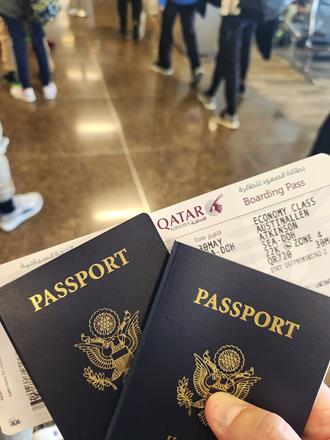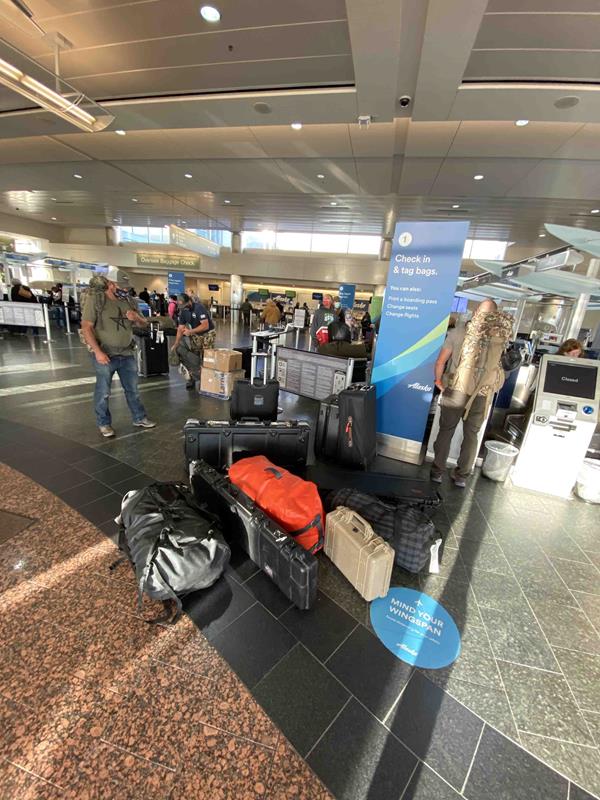January 2024
Author: Austin Atkinson
Every year, I meet hunters who prefer driving to their hunting destinations, despite high fuel costs and long hours on the road. Having your own vehicle in camp offers more comfort and flexibility and simplifies bringing your game back home. However, for international trips or journeys to places like Alaska, flying is often the only viable option.
THE CASE
With most airlines imposing a 50 lb. luggage weight limit, I typically choose a rifle case that allows for extra gear alongside my firearm. This approach is advisable for domestic flights within the USA. I prefer packing my ammunition in the same locked case as the firearm, while ensuring the firearm and magazine are completely unloaded. Ammunition must be in a manufacturer’s box or a specifically designed case. A loaded soft belt ammo holster, for instance, would not be permissible. When traveling with a single firearm, it’s practical to pack bulky or heavy items like tripods, trekking poles, knives, and water filters in the case to utilize the 50 lb. limit.
For international travel, my strategy differs. I pack the firearm in the case with nothing else, reducing clutter and facilitating inspections at customs, immigration, and police checkpoints. The bolt should be secured out of the firearm, making the weapon clearly inoperable. For instance, last year, when I took two firearms to Namibia, I purchased a new foam insert in my case, self-cut with a hot knife to outline the rifles, indicating they were specifically intended for this trip. Unlike domestic flights, most countries and international airlines require ammunition to be packed separately. I use a small, waterproof Pelican container locked securely for my ammunition, declaring its weight at check-in. I place this small case in my checked duffel bag or suitcase.
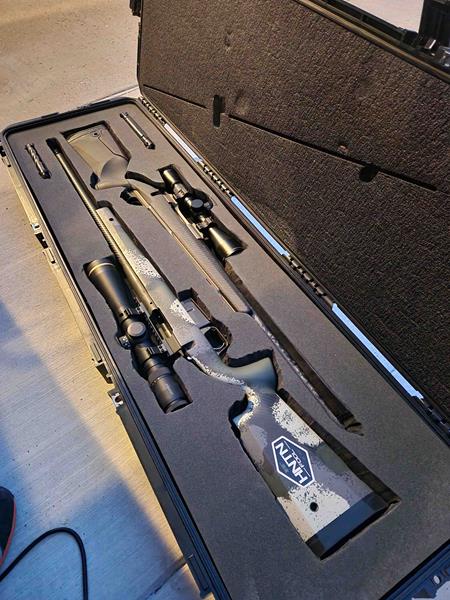
ATF AND DHS
If you own a suppressor under the National Firearms Act, consider taking it where legal for hunting. On domestic flights, I often leave the suppressor attached, carrying a photocopy of my trust documents and the stamped, approved ATF Form 4 in the hard case. For international travel, ensure the suppressor won’t cause issues in transit countries. Removing it from the barrel can make the firearm appear more “normal.” I place my suppressors under the visible foam surface along with my necessary paperwork, including a completed 4457 form copy, as this will hopefully not raise any more questions than necessary.
It’s a wise idea to have a Customs and Border Protection 4457 form completed for each firearm that you may be traveling with domestically or internationally. Don’t think that you can have your CBP Form 4457 stamped and copied easily the same day as your departure. I always take my firearm to a
Department of Homeland Security (DHS) port of entry office at an international airport before my trip to make sure it is stamped, and I can make multiple laminated copies of the form.
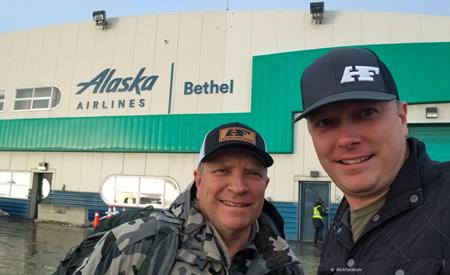
TRANSIT COUNTRIES
I’ve traveled through some difficult countries for firearms, like the Netherlands, where I had to have police-certified paperwork just to have the firearm in their country for my seven-hour layover. I generally advise avoiding countries like the United Kingdom for firearm transit. However, countries like Qatar, Germany, and Turkey have been more lenient, provided you don’t have to leave the airport during a stop over.
For those unsure about navigating international firearm regulations, consider using a travel agency specializing in international hunting trips with firearms. They can assist with permits, licenses, or transit documentation, potentially saving hours of effort and stress.
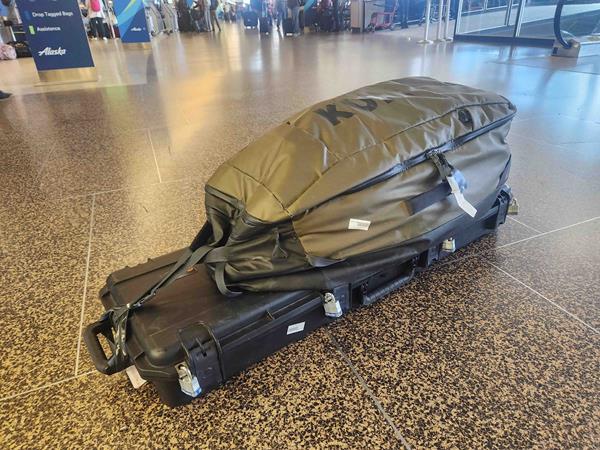
TSA
Long gone are the days of saying goodbye to your spouse at the gate right before you board the plane. Even I can remember standing in the baggage line asking other travelers on my same flight if they would mind checking my extra luggage under their ticket to save me some cash as we would each get two bags for free and IDs were rarely checked. Now our airports are filled with dozens of blue shirt-wearing TSA officers who are federally-placed employees at all U.S. airport terminals. I won’t continue to give too much of my own opinion about this organization, but suffice it to say, they may all be on the same team, but they understand and interpret regulations very differently. Just because you have checked a firearm in one airport with your airline and TSA station does not mean you can breeze through the TSA checks at a different airport.
After declaring your firearm to the ticket agent with your airlines at the departure counter, they should have you place a “Firearm(s) Unloaded Declaration” paper inside your gun case. Once that is complete, your case will be locked, by you. You hold the key or combination. Some airports, if they have sophisticated screening equipment, may take your firearm at that time and send it through the TSA process behind the scenes and call you if they have any issues. They may ask you to stay close to the ticket counter for a few minutes. Some airports have an oversize baggage screening area where you will deliver your tagged firearm case to TSA for further screening. At this point, the agent will ask for your key or ask you to unlock the case. You will be able to watch it be opened, inspected, and swabbed at this point. I like to see my case be inspected if it must be opened so that I am sure it will be repacked properly and securely.
The most common misconception I hear of when it comes to checking firearms is that TSA locks are required for hard cases. This is simply not true. Secure, approved locks are required, but they do not need to be the TSA-stamped variety. A TSA lock means any TSA personnel has the key to your lock and could open your case without your knowledge. This weapon is still yours while on domestic flights, and you alone should hold the key or combination. Do not forget, TSA rules state that any hard case must have a lock in all available eyelets. If you try to run through with two locks on a four eyelet case, you may get denied as the case is “not designed to be secure without all eyelets filled.”
One of my last suggestions is to make sure you have a
Global Entry membership, or at least
TSA Precheck. This will help save you so much time that you may burn up dealing with your firearms when you leave the state, country, or return home. It’s definitely worth the membership fee if you plan to travel more than once. The mantra I try to always remember while traveling is confidence with kindness. A confident traveler is rarely shaken down, questioned, or harassed. Kindness goes a long way as well. Ask questions, give clear answers, and address everyone in the airport as a distinguished officer with more authority than you. This article is not intended to provide legal or regulatory advice. Always consult with your airlines and/or local agencies where you intend to travel to or through for more details.
